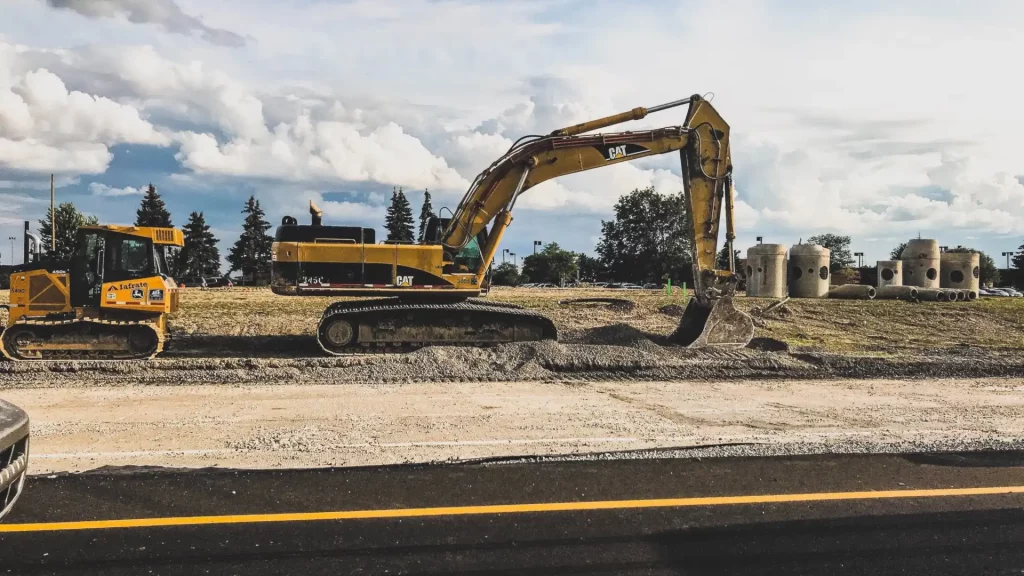Driving down the lane of innovation, road surface technology stands as a promising frontier. Imagine roads that repair themselves, absorb carbon emissions, and guide drivers seamlessly through smart systems! The future isn’t just asphalt and concrete; it’s a canvas for innovation, sustainability, and efficiency.
As Auckland-based asphalt contractors, we’re always on the hunt for new road surfacing methods and types. In this blog post, we’ll delve into the cutting-edge innovations set to reshape our streets.
Paving the Way: Current Challenges in Road Surfacing
Before delving into the future, let’s glance at the present road conditions and the challenges they pose.
Maintenance Demands
Frequent upkeep remains necessary to combat the persistent emergence of potholes and cracks. These maintenance demands not only drain resources but also pose safety risks for commuters. The perpetual cycle of patching and repairing creates a never-ending battle against degradation.
Environmental Impact
The traditional materials employed in road construction, such as asphalt and concrete, come at a cost to our environment. Their production processes generate significant carbon emissions, contributing to air pollution. Additionally, these materials lack sustainability as they are not recyclable and contribute to mounting waste concerns when roads are replaced or repaired.
Traffic Disruptions
While essential for maintaining road quality, roadwork often becomes a source of inconvenience and congestion for commuters. Lane closures, detours, and reduced speed limits during repair work lead to traffic bottlenecks, elongated commute times, and frustration among drivers.
Addressing these challenges is paramount in envisioning a future where roads are resilient, eco-friendly, and seamlessly functional, minimising disruptions while promoting sustainability and safety for all road users.

Innovative Road Surfacing Technologies
Self-Healing Road Surfaces
Self-healing materials herald a new era in road surfacing technology, combating the menace of potholes and cracks through a new approach to road materials.
Microcapsules
These tiny reservoirs within the road surface are packed with specialised healing agents. When the road suffers damage, these capsules rupture, releasing the healing agents into the affected area. The agents then react, filling the cracks and preventing further deterioration. This process happens swiftly and effectively, akin to a natural healing process within the road structure.
Shape Memory Polymers
Shape memory polymers possess the remarkable ability to revert to their original state post-damage. When the road experiences stress or damage, these polymers regain their initial form, restoring the road surface to its intact state. This self-restoration attribute significantly enhances the road’s durability and resilience against wear and tear.
Bacteria-Based Solutions
Integrating microorganisms into road surfacing materials allows for organic mending when damage occurs. These activated microorganisms engage in a natural healing process upon road surface damage, repairing the road surface through organic means. This sustainable approach not only aids in repairing but also reinforces the road structure, promoting longevity and environmental friendliness.
The notion of self-healing roads may sound farfetched, but they have been in development for decades and are ready to change how we think about road repairs.
Solar Roadways
Solar roads revolutionise traditional pavement by embedding photovoltaic cells within the surface, turning roads into energy-generating sources. These specialised panels absorb sunlight, converting it into electricity, offering a sustainable solution for power generation. By tapping into renewable solar energy, these roadways can alleviate dependency on conventional power sources and minimise greenhouse gas emissions, marking a significant stride toward a more eco-friendly infrastructure.
However, this concept has faced numerous challenges and criticisms. Some concerns revolve around the panels’ durability under heavy traffic, their efficiency in generating power, and the high installation and maintenance cost. While the idea is intriguing, further research and development are necessary to address these challenges before widespread implementation becomes feasible.
Smart Surfaces
Imagine roads with intelligence, where surfaces communicate with vehicles, optimising traffic flow and enhancing safety. These smart roads employ:
Embedded Sensors
Smart roads integrate sensors within their surfaces to monitor traffic density, providing real-time data for traffic management. These sensors facilitate the guidance of autonomous vehicles by relaying essential information about road conditions, optimising routes, and enhancing safety measures. Additionally, they can promptly alert drivers about potential hazards, enabling quick responses and accident prevention.
Dynamic Markings
Some smart roads feature interactive markings that adapt to changing conditions. These markings can dynamically alter their displays, providing essential information to drivers, such as warnings about upcoming hazards, fluctuating speed limits, or changing road conditions due to weather or construction. This adaptability enhances driver awareness and ensures safer navigation through responsive road signals.
Recycled Plastic Roads
Recycled plastic roads have gained attention as sustainable alternatives to conventional asphalt roads. This road surfacing technology aims to address environmental concerns associated with traditional road construction and the disposal of plastic waste.
Recycled plastic roads use plastic waste, typically from items like bottles and bags, mixed with asphalt to create a more durable and flexible road surface. The plastic waste is shredded into tiny pieces and mixed with bitumen, a binding agent used in asphalt. This mixture enhances road quality by improving resistance to wear and tear, increasing road longevity, and reducing maintenance needs. Plastic roads may just be the two-birds, one-stone solution we need!
Drive into the Future of Road Surfacing with TSL Group
The future of road surfacing technology is exciting. With ongoing research and development, the integration of advanced materials and technologies will likely revolutionise transportation infrastructure, creating safer, more sustainable roads.
TSL Group is at the forefront of this innovation here in New Zealand. We are constantly pushing the envelope, from safety surfacing to integrating smart technologies. Get in touch to learn how we are driving transport forward in NZ.


